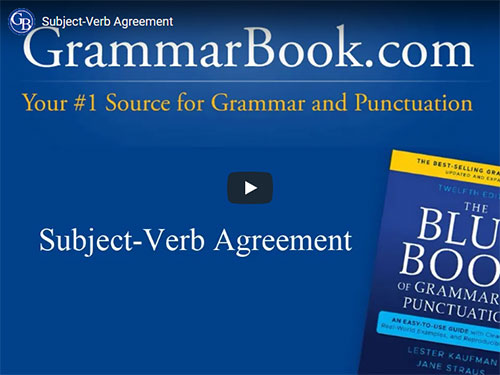|
Our English language—or any language, for that matter—incorporates arrangements of sounds that shape our thoughts into spoken expressions we understand.
Our two main sounds are vowels and consonants. Vowels are the sounds we make with an open vocal tract (no major blockage of airflow). Consonants are those we make by partially or completely blocking our airflow with our lips, tongue, throat, or teeth.
Together, vowels and consonants bind to make syllables, which are rhythmic units of speech. Another way to think of syllables is that they bundle vowels and consonants to create “beats” in the words that we say.
What Are Syllables Made Of?
The parts of a syllable can include:
nucleus > central vowel or vowel sound
onset > consonant before the vowel
coda > consonant after the vowel |
Whether alone or combined with others, syllables form words.
Take the word “amplify,” for example. It has three syllables, or beats: am-pli-fy. Note how each syllable is constructed.
am > nucleus (a) + coda (m)
pli > nucleus (i) + onsets (p, l)
fy > nucleus (y with i sound) + onset (f) |
We also know from native pronunciation that the final syllable (beat) receives the greatest emphasis: am-pli-FY.
A syllable can stand by itself to make a word as well, such as with the first-person singular pronoun I. I has one vowel, no consonants, and one syllable with one emphasis.
Syllable Letters, Sounds, Number
Not all syllables will contain a vowel letter (a, e, i, o, u). In some cases, a syllable's nucleus will be a vowel sound. We see this in a word such as rhythm, which has two syllables and six letters (all consonants, no vowels). Despite having no vowels, each syllable has a vowel sound: ri-THUM.
A word's number of syllables is determined by its pronunciation as opposed to its number of letters. For example, the words screeched, scratched, and scrunched all have nine letters but only one syllable.
In a word such as shrugged, we have eight letters and one syllable. If we extract the word rugged from shrugged, we have a word with six letters and two syllables: rug-GED.
When we apply a word such as learned to mean the past tense of learn, we have one syllable. When we treat the same word as two syllables, learn-ED, we have an adjective meaning “well-educated.”
Why We Need Syllables
Syllables are vital to language because they structure otherwise meaningless sounds into words we can pronounce, understand, learn, and use.
Through syllables, we achieve the following.
Rhythm and emphasis. Syllables give language a natural cadence according to different words' stressed and unstressed syllables.
American English words typically have one syllable that is stressed over others, as we see in our example above (amplify). Such emphasis matters when we need to distinguish words that are spelled the same but have different meanings (homographs), as with the word present: PREH-zent (noun), pre-ZENT (verb).
Meaning, comprehension, and spelling. Syllables let us break words into parts we can more easily interpret and process, especially when words are increasingly long or complex.
As we are developing our vocabulary, we also can use syllable division to spell out words that might be unfamiliar or difficult for us. In this way, syllables are especially valuable to children as they are learning to communicate through language.
Music and poetry. Syllables become a means of rhythmic and stylistic delivery for creative expression. Consider for example the use of syllables in a Shakespeare sonnet or in a rap song by a contemporary hip-hop artist. |
In sum, syllables:
organize sounds into natural breaks in our speech with recognition of how words are pronounced, as well as where they start and end
help break words into parts we can spell and sound out
provide emphasis for word pronunciation and differentiation |
Types of Syllables
English words can be broken down into the six following syllable types.
Closed syllable: single vowel ending with a consonant, making a short sound
Examples: basket, fort, jump, napkin, stop
Open syllable: syllable ending with a single vowel, making a long sound
Examples: fly, go, hero, me, tiger
Vowel-consonant-e (magic e) syllable: syllable ending with a consonant and a silent "e"; elongated sound of the vowel before the e
Examples: baseball, fire, make, more, time, Valentine
Diphthong (vowel team) syllable: two vowels that make one blended vowel sound
Examples: fear, glue, house, pie, rainfall
R-controlled syllable: syllable followed by a single letter "r," making the sound controlled by the "r"
Examples: blur, caterpillar, ear, first, her
Consonant-le syllable: unaccented final syllable with a coda consonant (after the vowel) followed by "-le"
Examples: bicycle, candle, little, table, uncle |
Syllables: More Examples
The following are further examples of words in groups of increasing syllables.
| One Syllable |
Two Syllables |
Three Syllables |
| board |
biscuit |
mosaic |
| clean |
edict |
privilege |
| dry |
jumping |
referee |
| home |
window |
sustenance |
| Four Syllables |
Five Syllables |
Six Syllables |
| automatic |
electricity |
intercontinental |
| calligraphy |
individual |
misinterpretation |
| independence |
necessarily |
personification |
| perpetual |
opportunity |
unconditionally |
Related Topics
What Is a Phoneme?
What Is a Diphthong?
Sibilance: Definition and Examples
|





